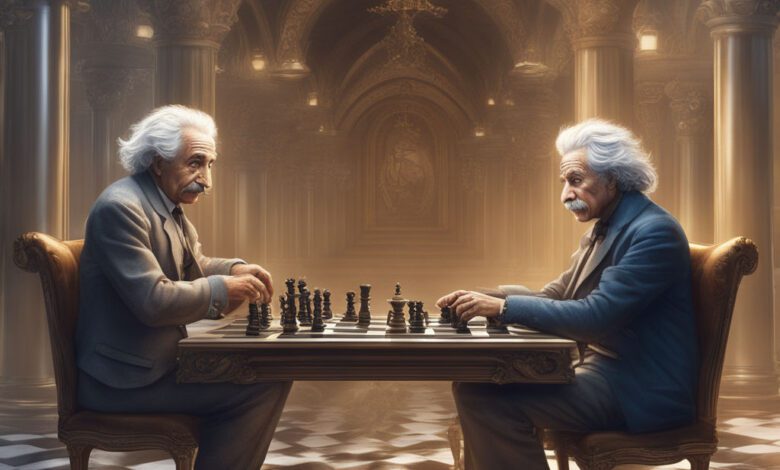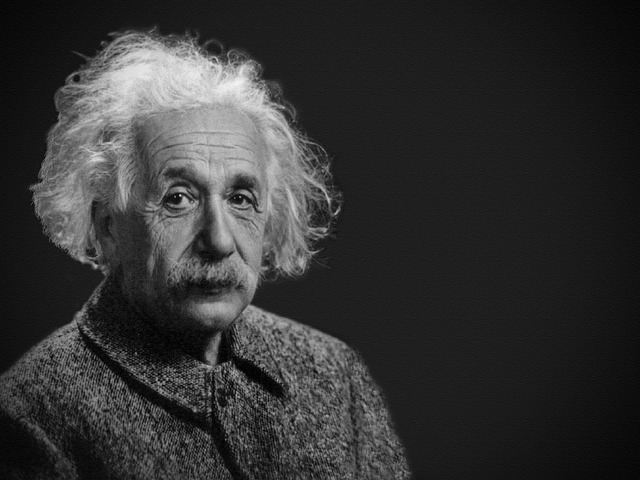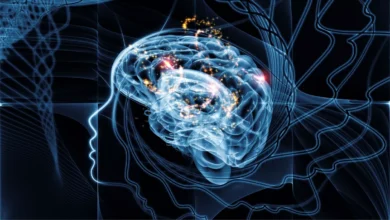Einstein’s cosmic chess: Decoding the God, dice, and quantum enigma
Embark on a journey through Albert Einstein's mind as he wrestles with the uncertainties of quantum mechanics, pondering the cosmic question of whether God engages in a celestial game of dice.

Albert Einstein, in December 1926, mused, “The theory produces a good deal but hardly brings us closer to the secret of the Old One. I am at all events convinced that He does not play dice.” These words, a response to physicist Max Born’s exploration into the heart of quantum mechanics, resonate through time, as familiar and elusive as the iconic equation E=mc².
Einstein’s rejection of the probabilistic dance at the core of quantum mechanics raises questions about his conception of God and the interplay between science and spirituality. Born had suggested that the essence of the new quantum theory resembled an erratic heartbeat, pulsating with randomness and uncertainty. Unlike classical physics, where actions yielded predictable outcomes, quantum mechanics introduced the notion that certain results occurred only with a probability, leaving room for alternative possibilities.

But Einstein, the relentless seeker of fundamental truths, dismissed this notion. His assertion that God does not play dice with the Universe reflects both his resistance to the apparent indeterminacy of quantum theory and his deeply rooted philosophical inquiries into the nature of existence.
Albert early years were shaped by nonobservant Ashkenazi Jewish parents, Hermann and Pauline Einstein. Despite their secularism, young Albert, at the age of nine, embraced Judaism fervently, becoming an observant Jew for a period. The family’s weekly tradition of inviting a poor scholar to share a meal led Einstein to Max Talmud (later Talmey), a medical student. From Talmud, he imbibed knowledge of mathematics and science, devouring all 21 volumes of Aaron Bernstein’s Popular Books on Natural Science (1880).
Talmud guided Einstein toward Immanuel Kant’s Critique of Pure Reason (1781) and subsequently to the philosophy of David Hume. This intellectual journey, fueled by the empiricist ideals of Hume and furthered by Austrian physicist Ernst Mach’s rejection of metaphysics, brought Einstein to a crossroads where science collided with religious dogma.
At the age of 12, Einstein rebelled against the conflict between scientific inquiry and religious scripture. A profound aversion to organized religion and authoritarianism, including dogmatic atheism, took root and persisted throughout his lifetime. This early exposure to empiricist philosophy would later prove instrumental in shaping groundbreaking theories.
Fourteen years after this intellectual awakening, while working as a ‘technical expert, third class’ at the Swiss Patent Office in Bern, Einstein formulated the special theory of relativity in 1905. The iconic equation E=mc² emerged as a cornerstone, challenging traditional notions of space and time. A decade later, Einstein expanded this transformation with the general theory of relativity, replacing gravity with the curvature of spacetime.
As Einstein matured, his views evolved. While initially aligned with Mach’s aggressive empiricism, he eventually distanced himself from this philosophy, stating, “Mach was as good at mechanics as he was wretched at philosophy.” This shift reflected recognition of the limitations of strict empiricism and a growing acknowledgment of the nuanced relationship between scientific understanding and broader philosophical considerations.
In grappling with the quantum dice game and rejecting its inherent randomness, Einstein’s quest for a deterministic universe persisted. His intricate dance with science, philosophy, and spirituality left an indelible mark on our understanding of the cosmos, showcasing the complex interplay between empirical inquiry, metaphysical reflections, and the enduring pursuit of cosmic truths.
You might also be intersted in – Einstein’s cosmic chess: Decoding the God, dice, and quantum enigma



